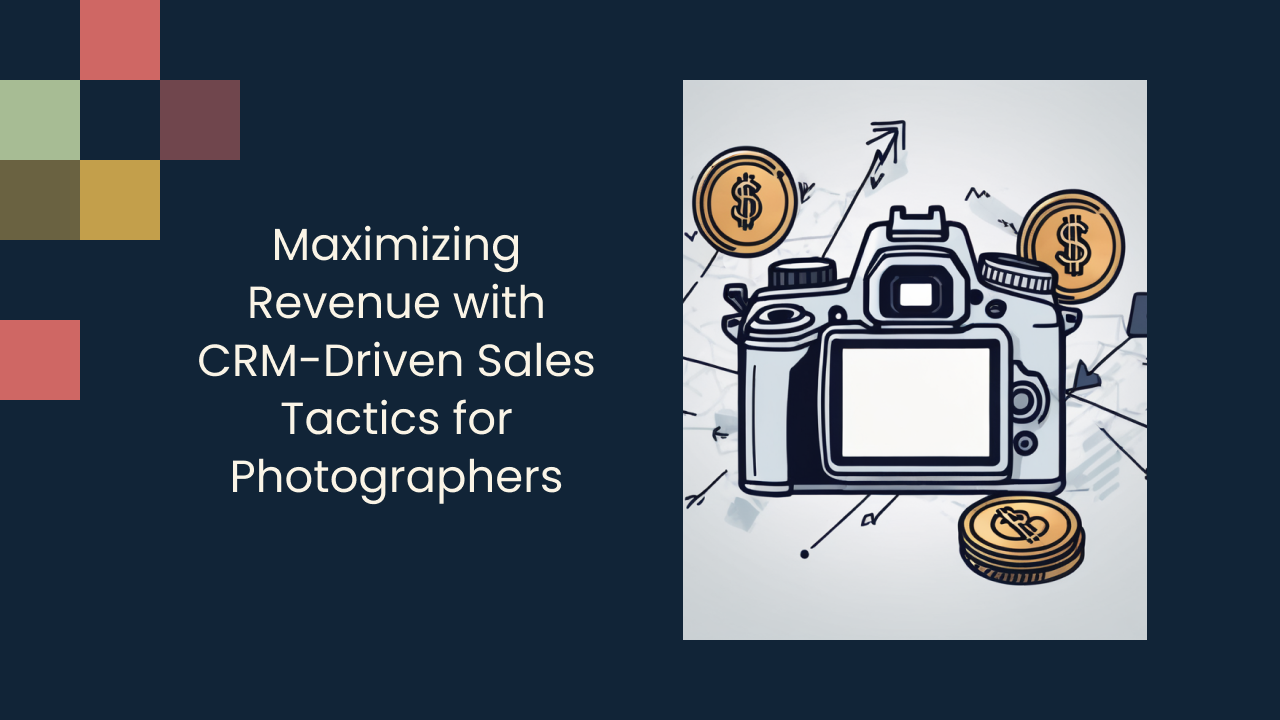Scaling Your Photography Business: Strategies for Moving from Solo to Studio

Building a successful photography business from scratch is no easy feat. As your client base grows and your workload increases, it becomes evident that you can no longer handle everything on your own. This is where scaling your photography business becomes essential. By transitioning from a solo operation to a studio, you can take on more clients, expand your services, and ultimately increase your revenue. In this article, we will explore the strategies and considerations involved in scaling your photography business.
Understanding the Need for Scaling Your Photography Business
As a solo photographer, you may be wondering why scaling your business is necessary. After all, you managed to build a successful business on your own. However, there are limitations to what you can achieve as a one-person show.
While being a solo photographer has its advantages, such as complete creative control and the ability to maintain a personal connection with clients, there comes a point where scaling up becomes essential. Scaling your photography business allows you to take on more clients and increase your workload, opening up new opportunities to generate revenue and grow your business.
But scaling your business is not just about increasing your client base. It also enables you to expand your services and offer a wider range of photography options to your clients. By diversifying your offerings, you can cater to different niches and attract a broader audience. Whether it's wedding photography, commercial shoots, or portrait sessions, scaling your business allows you to tap into various markets and meet the diverse needs of your clients.
The Benefits of Scaling Up
Scaling your photography business can have several advantages:
- Increased revenue potential: By scaling your business, you can tap into a larger market and attract more clients, resulting in higher revenue potential.
- Opportunity to offer a variety of services: Scaling allows you to expand your repertoire and offer a diverse range of photography services, catering to different client preferences and needs.
- Ability to handle larger projects: With a scaled-up business, you can take on more significant projects, such as destination weddings or commercial campaigns, that were previously beyond your capacity.
- Reduced workload and stress: As your business grows, you can delegate tasks to a team or hire additional photographers, reducing your workload and alleviating the stress of managing everything on your own.
All these benefits contribute to the overall growth and success of your business. Scaling up not only allows you to increase your revenue but also provides opportunities for professional development and expansion.
Identifying the Right Time to Scale
Knowing when to scale your photography business is crucial. Scaling too soon can overwhelm you, your clients, and potentially harm your reputation. On the other hand, delaying scaling can inhibit your business's growth potential.
So, how do you identify the right time to scale? Here are a few indicators:
- Your workload consistently exceeds your capacity: If you find yourself constantly overwhelmed with work, struggling to meet deadlines, and sacrificing quality due to a high volume of clients, it may be a sign that it's time to scale.
- You are turning away potential clients due to lack of availability: When you have to turn away clients because you simply don't have the capacity to take on more work, it's a clear indication that your business is ready to expand.
- You are receiving positive feedback and referrals from clients: If your clients are not only satisfied with your work but also recommending you to others, it shows that there is a demand for your services and potential for growth.
- Your revenue has consistently increased over a sustained period: A steady increase in revenue over time indicates that your business is thriving and ready for expansion.
If you identify these signs, it may be time to start planning the transition from being a one-person operation to a studio. Scaling your photography business can be a transformative step that opens up new possibilities and propels your career to new heights.
Laying the Groundwork for Scaling
Before diving headfirst into scaling your business, it's important to build a strong foundation. This involves creating a solid business plan and investing in the right equipment and space.
But what does it really mean to build a solid business plan? It's more than just jotting down a few ideas on a piece of paper. A well-defined business plan serves as a roadmap for your photography studio's growth. It outlines your goals, target market, pricing strategy, and marketing plan. It's a comprehensive document that requires careful thought and analysis.
Consider including the following elements in your business plan:
- A description of your business and its services
- Market research and analysis
- Competitor analysis
- Financial projections and budgeting
- Marketing and advertising strategies
By including these elements, you'll have a clear understanding of your business's strengths, weaknesses, opportunities, and threats. This knowledge will help you stay focused and make informed decisions as you scale your photography business.
Now, let's talk about investing in the right equipment and space. As you transition from a solo photographer to a studio, you'll need to make some strategic investments to accommodate your growing business.
First and foremost, quality cameras and lenses are essential. They are the tools of your trade, and investing in top-notch equipment will ensure that you can capture stunning images for your clients. Additionally, you'll need lighting equipment for various photography styles, as different lighting setups can create dramatically different effects in your photographs.
But it's not just about the gear. You'll also need editing software and computers that can handle the demands of post-processing. After all, editing is where the magic happens, and having the right tools can make all the difference in creating a polished final product.
Creating a functional workspace is equally important. You'll want to have comfortable shooting and client areas that reflect your studio's brand and style. A well-designed space can enhance the overall experience for both you and your clients, making them feel comfortable and at ease during their sessions.
And let's not forget about storage. With a growing business comes an increasing amount of equipment and client files. Having proper storage solutions in place will help you stay organized and ensure that everything is easily accessible when you need it.
By investing in the right equipment and creating a functional workspace, you'll be setting yourself up for success. You'll be able to efficiently serve your clients and produce high-quality work, which is crucial when scaling your photography business.
Hiring and Managing Your Team
As your business expands, bringing on additional team members becomes necessary. Hiring the right talent and effectively managing your team is essential for a smooth transition to a photography studio.
Finding the Right Talent
When hiring new photographers or assistants, look for individuals who align with your studio's values, work ethic, and photography style. You want team members who will embrace your vision and provide exceptional service to your clients.
Consider conducting thorough interviews, reviewing portfolios, and checking references before making hiring decisions.
Effective Team Management Strategies
Managing a team requires strong leadership skills and effective communication. Set clear expectations for your team members and provide ongoing training and support.
Additionally, establish systems and protocols for project management, client communication, and workflow to ensure everyone is on the same page and working efficiently.
Marketing and Branding Your Studio
As you scale your photography business, effective marketing and branding become even more crucial. You want to establish a unique brand identity and reach a wider audience of potential clients.
Creating a Unique Brand Identity
Your brand identity sets you apart from your competitors and helps clients connect with your studio. Consider your studio's values, target market, and photography style when developing your brand identity.
Create a visually appealing and cohesive brand through elements such as a logo, website, social media presence, and consistent messaging.
Effective Marketing Strategies for Photography Studios
With the proliferation of social media and online platforms, marketing your photography studio has become more accessible and diverse. Consider the following marketing strategies:
- Social media marketing to showcase your work and engage with potential clients
- Search engine optimization (SEO) to improve your online visibility
- Paid advertising campaigns on platforms like Google AdWords or Facebook Ads
- Collaborating with complementary businesses for cross-promotion
- Participating in industry events and networking opportunities
Combining these strategies will help increase your studio's exposure and attract new clients.
Financial Considerations for Scaling
Scaling your photography business requires careful financial planning. It's important to assess your budget, pricing, and profit margins to ensure sustainable growth.
Budgeting for Growth
Before scaling your business, evaluate your finances to determine how much you can invest in the expansion. Consider expenses such as equipment purchases, studio rent, marketing costs, and salaries for additional team members.
Create a detailed budget and ensure that your projected revenue can cover your expenses while leaving room for profit.
Understanding Pricing and Profit Margins
As your business scales, it may be necessary to adjust your pricing strategy. Take into account your increased overhead costs and the value you provide to clients.
Analyzing your profit margins will help you make informed decisions regarding pricing and ensure that your business remains profitable as you grow.
Conclusion
Scaling your photography business from solo to studio requires careful planning and implementation. By understanding the need for scaling, laying the groundwork, hiring and managing your team, marketing your studio, and considering the financial aspects, you can successfully transition and position your business for growth. Embrace the opportunities that come with scaling, and continue delivering exceptional photography services to your expanding client base.
Looking for an easier way to manage and grow your studio? Experience a platform built by a photographer, for photographers. Try it free for 2 weeks.











